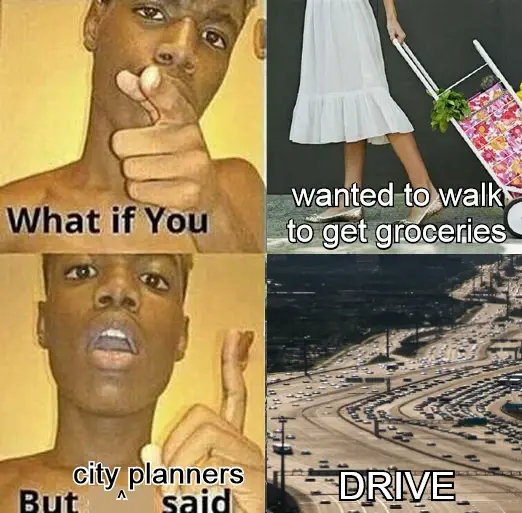Fuck Cars
A place to discuss problems of car centric infrastructure or how it hurts us all. Let's explore the bad world of Cars!
Rules
1. Be Civil
You may not agree on ideas, but please do not be needlessly rude or insulting to other people in this community.
2. No hate speech
Don't discriminate or disparage people on the basis of sex, gender, race, ethnicity, nationality, religion, or sexuality.
3. Don't harass people
Don't follow people you disagree with into multiple threads or into PMs to insult, disparage, or otherwise attack them. And certainly don't doxx any non-public figures.
4. Stay on topic
This community is about cars, their externalities in society, car-dependency, and solutions to these.
5. No reposts
Do not repost content that has already been posted in this community.
Moderator discretion will be used to judge reports with regard to the above rules.
Posting Guidelines
In the absence of a flair system on lemmy yet, let’s try to make it easier to scan through posts by type in here by using tags:
- [meta] for discussions/suggestions about this community itself
- [article] for news articles
- [blog] for any blog-style content
- [video] for video resources
- [academic] for academic studies and sources
- [discussion] for text post questions, rants, and/or discussions
- [meme] for memes
- [image] for any non-meme images
- [misc] for anything that doesn’t fall cleanly into any of the other categories
Recommended communities:
view the rest of the comments

The chart isn't about high-speed rail. High-speed lines often actually have lower capacity than lower-speed rail. For one, many suburban trains are bilevel, which can almost double the capacity per train, whereas high-speed lines often aren't bilevel. Further, the higher speed doesn't actually mean you can move more passengers per direction per hour; you're still limited by how frequently you can run trains, as you need safe stopping distance between each train. Thus, high-speed rail can run faster, but it also needs much more space between trains. Typically the highest frequency train/metro routes can run trains every minute or two. A 2000-person capacity train every 2 minutes is equivalent to 60k passengers per direction per hour.